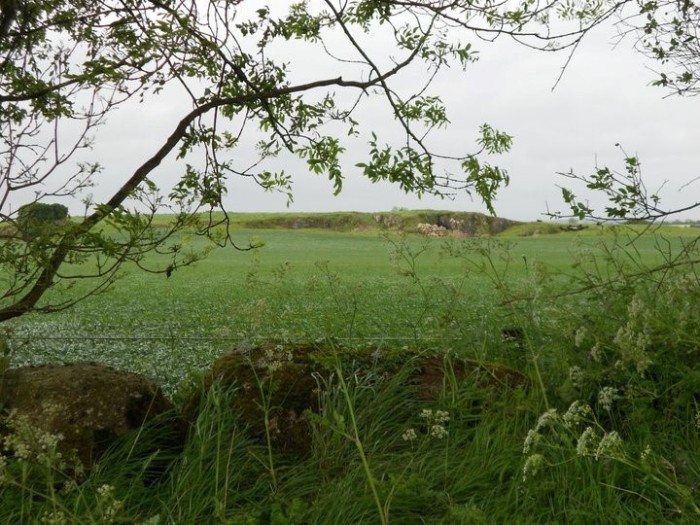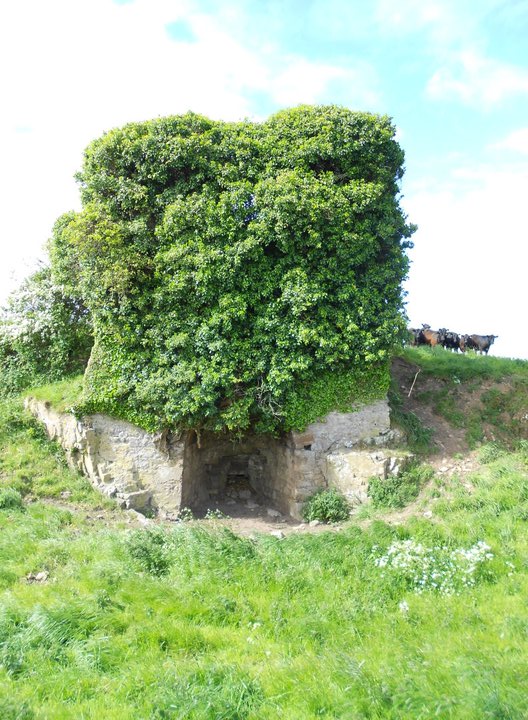
During my senior year of college, I took a course entitled “England and Ireland in the 16th Century.” With a History professor and an English professor heading the class together, we focused on the significance of the historical relationship between the two countries and the literature that came out of the time period. Little did I know that the class would lead to stories of Irish folk band bar crawls, getting lost in the catacombs of ruined castles, battles with electric fences and running from a herd of bulls. At the end of the semester, the group would travel first to England and then to Ireland for a 3 week study abroad term. While the trip was jammed full of “great story” material, there’s one day in particular that stood out, the day we visited Edmund Spenser’s Kilcolman Castle in County Cork, Ireland.
The day before the trip to Kilcolman Castle our class met with Professor Andrew King of University College Cork (UCC). He is an English professor and expert on English Renaissance poet, Edmund Spenser. The group set out on a walking tour of Cork with the purpose of seeing it as Spenser would have. We walked the city, guided by maps of old town layouts and led by Professor King. It was a truly one-of-a-kind experience usually only offered to UCC students. This adventure assembled the setting for the story of Edmund Spenser in Ireland.
Our trip to Kilcolman Castle began with an early bus trip out to Doneraile, where we met Professor King. He had mentioned during our Cork tour that the ruins were located on private property and that he had special access granted by the owners. Upon arrival, we expected to see the castle from the road with some sort of gate protecting it. Instead, we saw wire fences surrounding fields that were segmented off by lines of trees and more fences. The distant sound of mooing framed the otherwise silent moment of our arrival. Professor King reminded us that we were on private property owned by local farmers and urged us to be respectful of the crops, fences and animals.
First, our class had to hop over an electric fence that could not be disabled in any way. Some climbed over wooden posts which guided the wires and others carefully squeezed between wires. As a person who is over six feet tall, I didn’t worry about my ability to hop the fence (with a running start of course). However, one of my shorter classmates decided to attempt the feat without hesitation. She backed up a few steps and lunged toward the fence. As her foot caught the top wire, she toppled to the other side and landed in moist soil. Moments after our expert guide asked us to be respectful of the landowner’s property, one of us nearly pulls down a section of electric fence. Thankfully, our guide did not seem too put-off by the display. Surprisingly there were only two or three other people who received small stings from the wires, made obvious by the quick “ouch” each of them exclaimed.
Once we were all over the fence, we set out to cross a large field. Nothing was planted for the first hundred yards. There was only tall grass that needed to be navigated. We reached another wire fence that ran along a row of trees at the edge of the field and we slowly hurdled this one. The crops were short, but tiptoeing along the path was necessary to avoid crushing any plants. We realized that there were cows in an adjacent field separated by a larger barrier when the mooing (and the smells that accompany them) became more prominent. As we approached the next mingling of trees and wiring, the class got its first glimpse of the castle remains.
We pushed through the shrubbery of our final obstacle and emerged onto the area surrounding the ruins. Over the crest of the hill we could see the back of the castle and as we climbed more of it became visible. Distracted by the stunning contrast of this man-made stone structure against the brightest-green natural backdrop, I stepped into a large pile of cow feces. It was at this moment that I realized not all of the animals were separated from us by barriers. Professor King pointed out that the cattle were grazing elsewhere so it should be safe to explore the ruins. I fell slightly behind while I cleaned off my shoe, but quickly caught back up as the group reached the castle. It was a great deal smaller than many of the other castles we had encountered during our trip. However, it was easily one of the most beautiful. The stone structure seemed to grow right out of the hill just like the trees and bushes nearby. A topping of ivy matched the rich green color of the surrounding grass.
We were encouraged to climb a staircase inside which led to the top of what was left of the building. It had overgrown with ivy and its own patch of grass. The class gathered atop the castle remains accompanied by Professor King. He then read a poignant passage of The Faerie Queene, which Spenser wrote while living in Kilcolman. There were miles of fields in every direction with very little other man-made structure in view. I felt as though we were seeing the Irish countryside as Edmund Spenser himself would have. Connecting with a significant historical figure in such a unique way brought this surreal feeling of being in another time.
Professor King finished reading and asked us to climb back down and make our way out onto the field. We walked along the bottom of the hill toward the end of an underground tunnel leading from the castle. Spenser had apparently used the tunnel to escape when unhappy locals attacked the castle. As we approached, Professor King pointed off in one direction and instructed us to quickly head back to the fence. We needed to make an escape of our own. The cattle had begun to move toward us and they all seemed to be bulls. The grunts, moos and pounding of hooves came closer as we retraced our steps. Seeing how close the animals were getting, we rushed along the bottom of the hill and many of us began to run for the closest fence. Luckily, as we reached the edge of the field, the bulls stayed atop the hill and glared down at us. They seemingly guarded the ruins from unwanted visitors.
We trudged back through the fields and I helped lift smaller classmates over the electrified fence. A final “thank you” to the professor and we boarded the bus and headed back to Cork. The entire class, amazed that no one was hurt, laughed about the event for the remainder of our trip. I’ll always remember the day I traveled back in time a few hundred years to see a little piece of Ireland the way it would have been, and the grand escape to make it back to civilization.
[Check out a short video on the UCC class featuring Professor Andrew King]






In that first photo it really looks like those cows are staring you down…
LikeLike
Oh they definitely were.
LikeLike